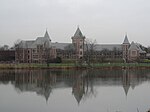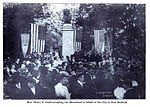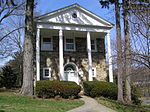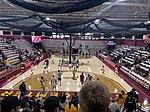Mahlstedt's Ice Pond
Mahlstedt's Ice Pond, commonly referred to as Huguenot Lake, is a man-made lake located in central New Rochelle in Westchester County, New York. Constructed in 1885, the lake is impounded by the Mahlstedt Reservoir Dam on a tributary of Pine Brook. The dam is of earthen construction and rock fill, with a height of 15 feet (4.6 m) and a length of 7,000 feet (2,100 m). It has a normal surface area of 14 ares (15,000 sq ft), a capacity of 70 acre-feet (86,000 m3), and normal storage of 56 acre-feet (69,000 m3).For years the lake served as a water supply source for nearby Mount Vernon as well as a successful ice supply business. Several generations of the Mahlstedt family harvested ice from the lake, however, after refrigeration made the once-lucrative business obsolete, the family sold the lake and adjoining property to the city in 1922. The lake is currently part of Huguenot Park and the New Rochelle High School campus. It is currently used for recreational and environmental purposes.
Excerpt from the Wikipedia article Mahlstedt's Ice Pond (License: CC BY-SA 3.0, Authors).Mahlstedt's Ice Pond
North Avenue,
Geographical coordinates (GPS) Address Nearby Places Show on map
Geographical coordinates (GPS)
| Latitude | Longitude |
|---|---|
| N 40.93 ° | E -73.7915 ° |
Address
North Avenue
North Avenue
10804
New York, United States
Open on Google Maps







